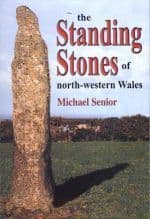This store requires javascript to be enabled for some features to work correctly.
- ISBN: 9780863818134
- Author: Michael Senior
- Publication April 2003
- Format: Paperback, 182x124 mm, 96 pages
A highly interesting volume tracing the history and significance of the standing stones of north-western Wales, especially their possible association with ley lines, trackways, burial sites and astronomy. 45 black-and-white photographs.
Gwales Review
To use Michael Senior's own summing-up: 'This book is both a catalogue and the story of a quest', although he adds that it is not a comprehensive list nor has he been able to visit every stone. His aim here is to review the many theories about the stones and to accept the challenge thrown down by their mysterious origin, beginning at once to question current thinking: ' " This monument", states a notice at the stone avenue of Avebury, "was erected in about 3,000 BC for an unknown religious purpose" '. If unknown, asks Mr Senior, why assume it was religious?
In pursuit of his quest, he has read widely on the subject. Chapter I considers the Tal-y-fan group above Abergwyngregyn, but despite studying the stones minutely, he can come to no conclusion about them. Chapter II, 'Linear thinking', delineates the controversial theory of ley-lines, quoting Bellamy and Williamson: 'one of the biggest red herrings in the history of popular thought'. Nevertheless, Mr Senior is nothing if not thorough, as he has dowsed all round stones with no results. Chapter III, 'The Llŷn group', is notable again for leading to no conclusion. Chapter IV: 'Anglesey stones', makes the claim that Anglesey has the greatest concentration of megalithic monuments in Europe, more even apparently than Brittany. Fertility theories are assessed here and the notion that the Druids used the stones to make astronomical surveys, a theme further developed in the subsequent chapter. In Chapter VI: ' Meirionnydd stones and tracks', Senior debunks the theory that the stones are way-markers. In Chapter VII: 'Early Bronze Age Life', readers are at last given an approximate date for the stones which might have been mentioned earlier. And in the final chapter he considers and dismisses the theory that the stones are memorials and claims that they were sundials, though he begs the queation as to why, therefore, they are so frequently in groups.
As a survey of the lunatic fringe as well as learned authorities, (sometimes one and the same), it is an amusing book, but if you are seeking answers you will not find them here.
Sue Passmore

